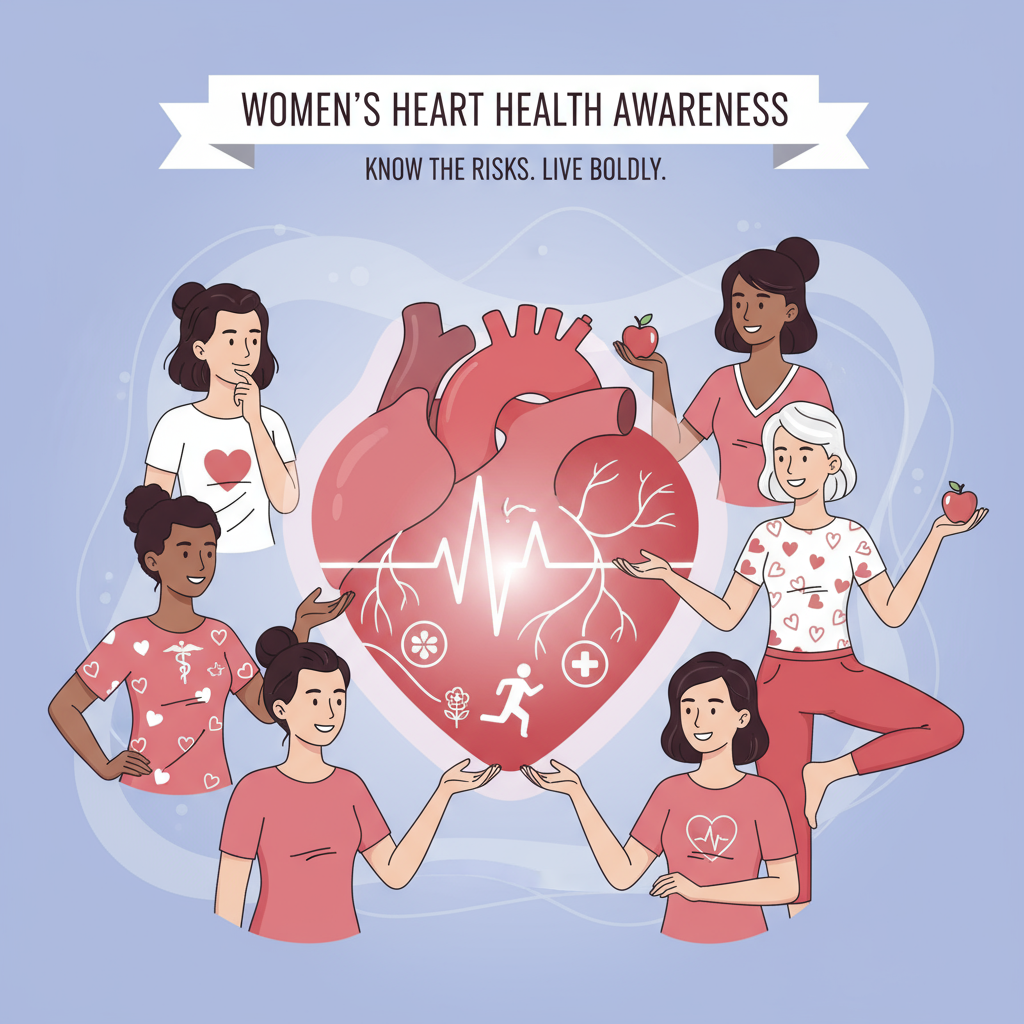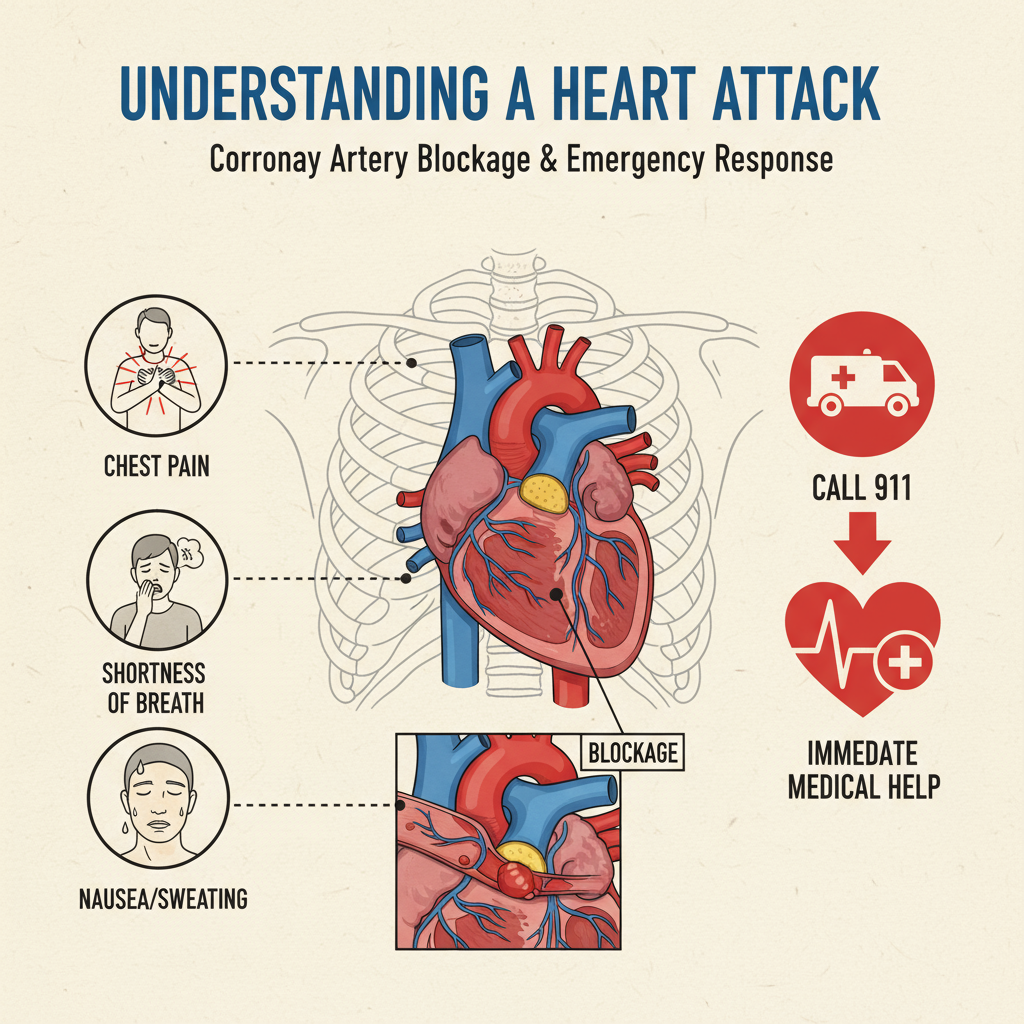UNDERSTANDING HEART ATTACK: WHAT EVERYONE SHOULD KNOW
A heart attack is one of the most common and serious health problems today. We often hear
about it happening to others, but many people don’t fully understand what it really is, why it
happens, and how to prevent it. Let’s break it down in simple words.
WHAT IS A HEART ATTACK?
Your heart is like a pump that keeps blood moving to the whole body. To do its job, the heart
itself also needs blood and oxygen. This supply comes from blood vessels called coronary
arteries.
A heart attack happens when one of these arteries gets blocked and blood can’t reach part of
the heart. Without oxygen, that part of the heart muscle starts getting damaged. The longer the
blockage is not treated, the more serious the damage.
SYMPTOMS TO WATCH OUT FOR
A heart attack does not always look the same in everyone. But common warning signs include:
- Chest pain or pressure (like something heavy is sitting on your chest)
- Pain spreading to the arm, shoulder, neck, jaw, or back
- Shortness of breath
- Sweating, nausea, or sudden dizziness
- Extreme tiredness without clear reason
Some people, especially women and those with diabetes, may have silent heart attacks where
symptoms are mild or not very obvious.
WHY DOES A HEART ATTACK HAPPEN?
The main reason is build-up of fatty deposits (plaque) in the arteries. Over time, this can harden
and narrow the arteries, a problem known as coronary artery disease.
Things that increase the risk include:
- High blood pressure
- High cholesterol
- Diabetes
- Smoking
- Obesity and lack of exercise
- Stress
- Family history of heart disease
WHAT TO DO IN CASE OF A HEART ATTACK
- Call for emergency medical help immediately. Do not wait to “see if it goes away.”
- If advised by a doctor earlier, chew an aspirin (it helps thin the blood).
- Stay calm, sit down, and avoid physical effort while waiting for help.
Quick treatment can save a life and reduce damage to the heart.
LIFE AFTER A HEART ATTACK
Many people survive and live well after treatment. Doctors may recommend medicines,
lifestyle changes, or in some cases procedures like angioplasty (opening blocked arteries) or
bypass surgery. Regular check-ups and a healthy lifestyle are key.
PREVENTING A HEART ATTACK
The good news is that prevention is possible. Small, consistent steps can protect your heart:
- Eat a balanced diet (more fruits, vegetables, whole grains, less fried/junk food).
- Exercise at least 30 minutes a day, 5 days a week.
- Quit smoking and reduce alcohol.
- Manage stress with meditation, yoga, or hobbies.
- Keep blood pressure, sugar, and cholesterol under control.



Jilly Smith 29 Oct 2022
Nulla sed viveraut lorem tetur diam nunc bibendum imperdiets ipsum dolor tur adipisicing elit, sed do eiusmod tempor incididunt labore.
Jilly Smith 29 Oct 2022
Nulla sed viveraut lorem tetur diam nunc bibendum imperdiets ipsum dolor tur adipisicing elit, sed do .